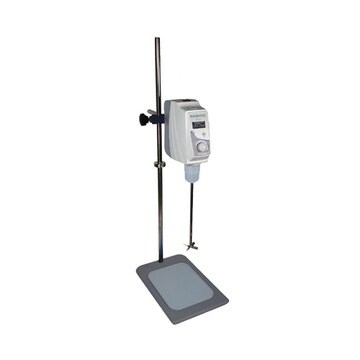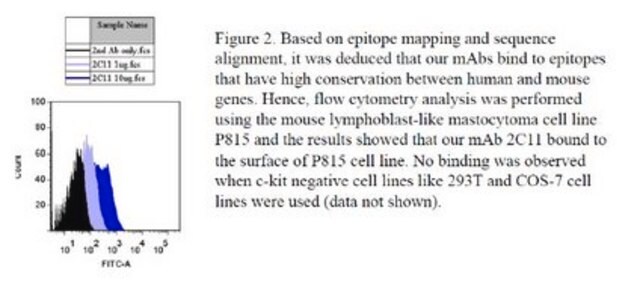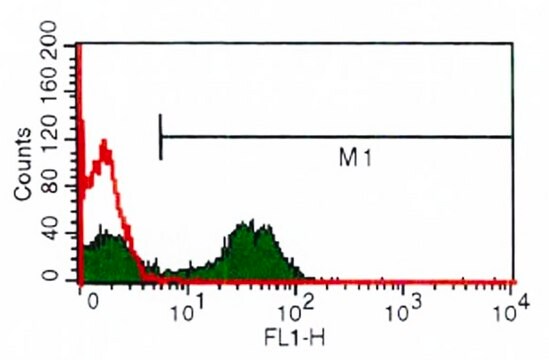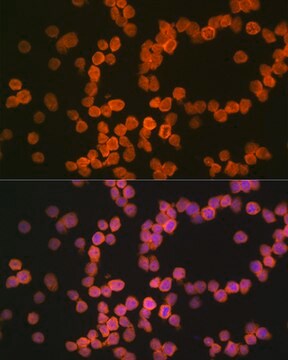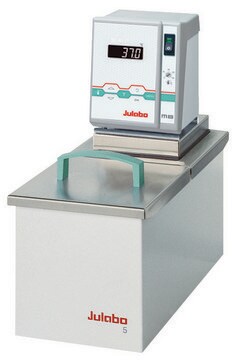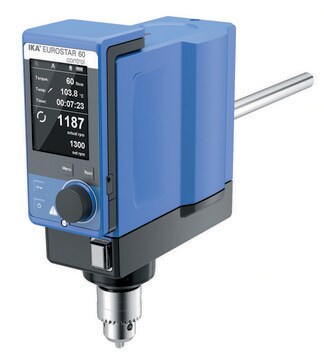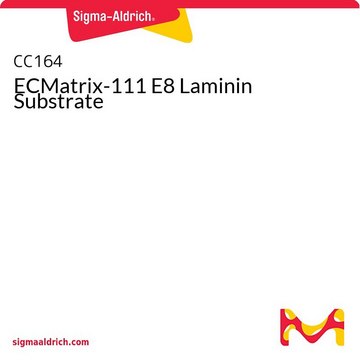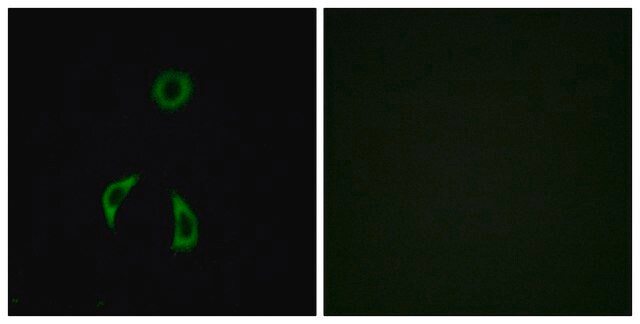Opis ogólny
We are committed to bringing you greener alternative products, which adhere to one or more of The 12 Principles of Green Chemistry.This antibody is Preservative-free, produced without the harm or sacrifice of animals and exceptionally stable to allow for ambient shipping and storage if needed and thus aligns with "Waste Prevention", "Designing Safer Chemicals" and "Design for Energy Efficiency".
Click here for more information.
ZooMAb® antibodies represent an entirely new generation of recombinant monoclonal antibodies.Each ZooMAb® antibody is manufactured using our proprietary recombinant expression system, purified to homogeneity, and precisely dispensed to produce robust and highly reproducible lot-to-lot consistency. Only top-performing clones are released for use by researchers. Each antibody is validated for high specificity and affinity across multiple applications, including its most commonly used application. ZooMAb® antibodies are reliably available and ready to ship when you need them.
Specyficzność
Clone 1L19 is a ZooMAb® Rabbit recombinant monoclonal antibody that specifically detects c-Kit/CD117. It targets an epitope within 23 amino acids from the N-terminal, extracellular domain.
Immunogen
KLH-conjugated linear peptide corresponding to 23 amino acids from the N-terminal, extracellular domain of human c-Kit/CD117.
Zastosowanie
Quality Control Testing
Evaluated by Western Blotting in TF-1 cell lysate.
Western Blotting Analysis: A 1:1,000 dilution of this antibody detected c-Kit/CD117 in TF-1 cell lysate.
Tested applications
Western Blotting Analysis: A 1:1,000 dilution from a representative lot detected c-Kit/CD117 in NIH3T3 cell lysate.
Flow Cytometry Analysis: 1 μg from a representative lot detected c-Kit/CD117 in one million K562 cells.
Affinity Binding Assay: A representative lot of this antibody bound CD117/c-Kit with a KD of 1.8 x 10-7in an affinity binding assay.
Immunocytochemistry Analysis: A 1:1000 dilution from a representative lot detected c-Kit/CD117 in TF-1 cells.
Note: Actual optimal working dilutions must be determined by end user as specimens, and experimental conditions may vary with the end user
Anti-c-Kit/CD117, clone 1L19 ZooMAb®, Cat. No. ZRB1284, is a recombinant Rabbit monoclonal antibody that specifically targets v-Kit/CD117 and is tested for use in Affinity Binding Assay, Flow Cytometry, Immunocytochemistry, and Western Blotting.
Opis wartości docelowych
Mast/stem cell growth factor receptor Kit (UniProt: P10721; also known as EC: 2.7.10.1, SCFR, Piebald trait protein, PBT, Proto-oncogene c-Kit, Tyrosine-protein kinase Kit, p145 c-kit, v-kit Hardy-Zuckerman 4 feline sarcoma viral oncogene homolog) is encoded by the KIT (also known as SCFR) gene (Gene ID: 3815) in human. c-Kit is a single-pass type I membrane glycoprotein that is synthesized with a signal peptide (aa 1-25), which is subsequently cleaved off to generate the mature form that contains an extracellular domain (aa 26-524), a transmembrane domain (aa 525-545), and a cytoplasmic domain (aa 546-976). c-Kit has tyrosine protein kinase activity and serves as a cell-surface receptor for the stem cell factor (SCF)/KITLG. It plays a significant role in the regulation of cell survival, cell proliferation, stem cell maintenance, gametogenesis and other functions. In response to SCF binding, c-Kit can activate several signaling pathways. In the absence of bound stem cell factor (SCF), it exists as a monomer, however, it homodimerizes in the presence of bound SCF and forms a heterotetramer with two SCF molecules. c-Kit can be autophosphorylated on tyrosine residues and SCF binding enhances its autophosphorylation. Its kinase activity is reported to be down-regulated by phosphorylation on serine residues by protein kinase C family members. Phosphorylation at tyrosine 568 is shown to be essential for its interaction with PTPN11/SHP-2, CRK (isoform Crk-II) and members of the Src tyrosine-protein kinase family and phosphorylation at tyrosine 570 is required for interaction with PTPN6/SHP-1. c-Kit can be ubiquitinated by SOCS6 and it is rapidly ubiquitinated after autophosphorylation induced by SCF binding, leading to its internalization and degradation. Lack of c-Kit expression has been reported in multiple cancer types and c-Kit expressing cells display a regression of typical morphological features of malignancy. This ZooMAb® recombinant monoclonal antibody, generated by our propriety technology, offers significantly enhanced specificity, affinity, reproducibility, and stability over conventional monoclonals.
Postać fizyczna
Purified recombinant rabbit monoclonal antibody IgG, lyophilized in PBS with 5% Trehalose, normal appearance a coarse or translucent resin. The PBS/trehalose components in the ZooMAb® formulation can have the appearance of a semi-solid (bead like gel) after lyophilization. This is a normal phenomenon. Please follow the recommended reconstitution procedure in the data sheet to dissolve the semi-solid, bead-like, gel-appearing material. The resulting antibody solution is completely stable and functional as proven by full functional testing. Contains no biocide or preservatives, such as azide, or any animal by-products. Larger pack sizes provided as multiples of 25 μL.
Rekonstytucja
300 μg/mL after reconstitution at 25 μL per vial. Please refer to guidance on suggested starting dilutions and/or titers per application and sample type.
Przechowywanie i stabilność
Recommend storage of lyophilized product at 2-8°C; Before reconstitution, micro-centrifuge vials briefly to spin down material to bottom of the vial; Reconstitute each vial by adding 25 μL of filtered lab grade water or PBS; Reconstituted antibodies can be stored at 2-8°C, or -20°C for long term storage. Avoid repeated freeze-thaws.
Informacje prawne
ZooMAb is a registered trademark of Merck KGaA, Darmstadt, Germany
Oświadczenie o zrzeczeniu się odpowiedzialności
Unless otherwise stated in our catalog or other company documentation accompanying the product(s), our products are intended for research use only and are not to be used for any other purpose, which includes but is not limited to, unauthorized commercial uses, in vitro diagnostic uses, ex vivo or in vivo therapeutic uses or any type of consumption or application to humans or animals.
This page may contain text that has been machine translated.

